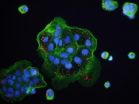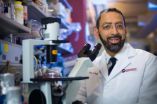(Press-News.org) The diversity of biobanks, collections of human specimens from a variety of sources, raises questions about the best way to manage and govern them, finds a study published in BioMed Central's open access journal Genome Medicine. The research highlights difficulties in standardizing these collections and how to make these samples available for research.
Biobanks have been around for decades, storing hundreds of millions of human specimens. But there has been a dramatic increase in the number of biobanks in the last ten years, since the human genome sequencing project. Because there is no central registry of biobanks in the US, researchers from the University of North Carolina at Chapel Hill invited over 600 biobanks to participate in an online survey.
The study finds great diversity in when and why these biobanks were created, how they are organized, who pays for them, and what specimens they store. Over half were set up to facilitate research into a particular disease, mainly cancer, but others were created as a 'home' for older sample collections. The number of samples within each biobank is hugely variable, from tens to millions, and can include clinical, pediatric or post-mortem samples, or specimens from research, with origins as varied as blood and solid tissues, or hair and toe nails.
Talking about attempts to put into place policies to regulate biobanks, Prof Gail Henderson, who led this project explained, "Biobanks are part of an emerging and rapidly evolving industry, with an increasingly central role in biomedical research. Because they have developed in different contexts with different goals and funding sources, any attempt to control or standardize biobanks will need to take into account their organizational diversity and their individual practices and challenges. It is unlikely that a one-size policy will fit all."
###Media contact
Dr Hilary Glover
Scientific Press Officer, BioMed Central
Tel: +44 (0) 20 3192 2370
Mob: +44 (0) 778 698 1967
Email: hilary.glover@biomedcentral.com
Notes
1. Characterizing biobank organizations in the U.S.: results from a national survey
Gail E Henderson, R Jean Cadigan, Teresa P Edwards, Ian Conlon, Anders G Nelson, James P Evans, Arlene M Davis, Catherine Zimmer and Bryan J Weiner
Genome Medicine (in press)
Please name the journal in any story you write. If you are writing for the web, please link to the article. All articles are available free of charge, according to BioMed Central's open access policy.
Article citation and URL available on request on the day of publication.
2. Genome Medicine publishes peer-reviewed research articles, new methods and software tools in all areas of medicine studied from a post-genomic perspective. The journal also provides review and comment on the latest advances in translational genomics and personalized medicine, and their implications for the clinical and ethical management of human health and disease. @GenomeMedicine
3. BioMed Central (http://www.biomedcentral.com/) is an STM (Science, Technology and Medicine) publisher which has pioneered the open access publishing model. All peer-reviewed research articles published by BioMed Central are made immediately and freely accessible online, and are licensed to allow redistribution and reuse. BioMed Central is part of Springer Science+Business Media, a leading global publisher in the STM sector. @BioMedCentral
Organizing human specimen collections: Getting the best out of biobanks
2013-01-25
ELSE PRESS RELEASES FROM THIS DATE:
Immune cell suicide alarm helps destroy escaping bacteria
2013-01-25
CHAPEL HILL, N.C. – Cells in the immune system called macrophages normally engulf and kill intruding bacteria, holding them inside a membrane-bound bag called a vacuole, where they kill and digest them.
Some bacteria thwart this effort by ripping the bag open and then escaping into the macrophage's nutrient-rich cytosol compartment, where they divide and could eventually go on to invade other cells.
But research from the University of North Carolina School of Medicine shows that macrophages have a suicide alarm system, a signaling pathway to detect this escape into ...
Out-of-pocket costs for breast cancer probably manageable for most Canadian women
2013-01-25
Out-of-pocket costs resulting from breast cancer care in the year following diagnosis are likely manageable for most women, but some women are at a higher risk of experiencing the financial burden that comes from those costs in Canadian breast cancer patients, according to a study published January 24 in the Journal of the National Cancer Institute.
While extensive information about the level of out-of-pocket costs after early breast cancer diagnosis has been unavailable until now, the costs resulting from the disease and the effects the costs have on family financial ...
Fruit and vegetable intake is associated with lower risk of ER- breast cancer
2013-01-25
There is no association between total fruit and vegetable intake and risk of overall breast cancer, but vegetable consumption is associated with a lower risk of estrogen receptor-negative (ER-) breast cancer, according to a study published January 24 in the Journal of the National Cancer Institute.
The intake of fruits and vegetables has been hypothesized to lower breast cancer risk, however the existing evidence is inconclusive. There are many subtypes of breast cancer including ER- and ER positive (ER+) tumors and each may have distinct etiologies. Since ER- tumors, ...
Spotting fetal growth problems early could cut UK stillbirths by 600 a year
2013-01-25
The authors say spotting it early could substantially reduce the risk, and this needs to become a cornerstone of safety and effectiveness in antenatal care.
Stillbirth rates in the United Kingdom are among the highest in developed countries. They have often been considered unexplained and unavoidable, and their rates have changed little over the last two decades.
Recently, doctors have found that many stillborn babies fail to reach their growth potential, prompting a renewed focus on what causes fetal growth restriction. So a team of researchers at the West Midlands ...
Scientists discover how epigenetic information could be inherited
2013-01-25
New research reveals a potential way for how parents' experiences could be passed to their offspring's genes. The research was published today, 25 January, in the journal Science.
Epigenetics is a system that turns our genes on and off. The process works by chemical tags, known as epigenetic marks, attaching to DNA and telling a cell to either use or ignore a particular gene.
The most common epigenetic mark is a methyl group. When these groups fasten to DNA through a process called methylation they block the attachment of proteins which normally turn the genes on. ...
Researchers discover new mutations driving malignant melanoma
2013-01-25
BOSTON—Two new mutations that collectively occur in 71 percent of malignant melanoma tumors have been discovered in what scientists call the "dark matter" of the cancer genome, where cancer-related mutations haven't been previously found.
Reporting their findings in the Jan. 24 issue of Science Express, the researchers from Dana-Farber Cancer Institute and the Broad Institute said the highly "recurrent" mutations – occurring in the tumors of many people – may be the most common mutations in melanoma cells found to date.
The researchers said these cancer-associated ...
Red explosions: The secret life of binary stars is revealed
2013-01-25
(Edmonton) A University of Alberta professor has revealed the workings of a celestial event involving binary stars that results in an explosion so powerful it ranks close to Supernovae in luminosity.
Astrophysicists have long debated about what happens when binary stars, two stars that orbit one another, come together in a common envelope.
When this dramatic cannibalizing event ends there are two possible outcomes; the two stars merge into a single star or an initial binary transforms in an exotic short-period one.
The event is believed to take anywhere from a dozen ...
Gene sequencing project mines data once considered 'junk' for clues about cancer
2013-01-25
(MEMPHIS, Tenn. – January 24, 2013) Genome sequencing data once regarded as junk is now being used to gain important clues to help understand disease. The latest example comes from the St. Jude Children's Research Hospital – Washington University Pediatric Cancer Genome Project, where scientists have developed an approach to mine the repetitive segments of DNA at the ends of chromosomes for insights into cancer.
These segments, known as telomeres, had previously been ignored in next-generation sequencing efforts. That is because their repetitive nature meant that the ...
Newly discovered 'scarecrow' gene might trigger big boost in food production
2013-01-25
ITHACA, N.Y. – With projections of 9.5 billion people by 2050, humanity faces the challenge of feeding modern diets to additional mouths while using the same amounts of water, fertilizer and arable land as today.
Cornell University researchers have taken a leap toward meeting those needs by discovering a gene that could lead to new varieties of staple crops with 50 percent higher yields.
The gene, called Scarecrow, is the first discovered to control a special leaf structure, known as Kranz anatomy, which leads to more efficient photosynthesis. Plants photosynthesize ...
The storm that never was: Why the weatherman is often wrong
2013-01-25
Have you ever woken up to a sunny forecast only to get soaked on your way to the office? On days like that it's easy to blame the weatherman.
But BYU mechanical engineering professor Julie Crockett doesn't get mad at meteorologists. She understands something that very few people know: it's not the weatherman's fault he's wrong so often.
According to Crockett, forecasters make mistakes because the models they use for predicting weather can't accurately track highly influential elements called internal waves.
Atmospheric internal waves are waves that propagate between ...


